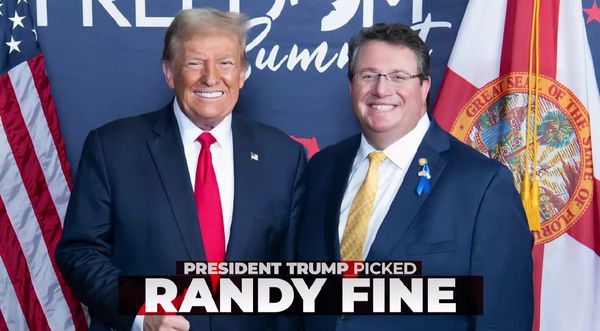
A document on Syria’s “state symbols” - presented by the government delegation before the seventh round of the Constitutional Committee’s meetings in Geneva – sparked disputes with the group representing the opposition, headed by Hadi al-Bahra, and other affiliated civil society figures.
The seventh round of meetings ends this Friday, with participants submitting proposals and written comments to the office of UN envoy Geir Pedersen, in order to facilitate talks between the head of the government’s delegation, Ahmad Al-Kuzbari, and Al-Bahra over constitutional reforms within the framework of UN Security Council Resolution 2254.
An agreement required submitting written proposals on the last day of the meetings, which saw Pedersen shuffling from Damascus, Moscow and other capitals, as the delegation “named by the government” has voiced its rejection of such a mechanism during the past rounds of talks.
Under previous agreements sponsored by Pedersen, each delegation had to submit a written paper on a constitutional principle to the session’s presidency, to be discussed among the participants from the government, opposition and civil society delegations. The seventh round began with a proposal by the opposition delegation on the basics of governance.
Governance basics
The proposal submitted by Al-Bahra stated that the “system of governance in the state is republican based on the rule of law, respect for human dignity and the will of the people, and a full commitment to building a free, just and solidarity society. And that sovereignty must be exercised by the people through the means of voting established in the constitution, allowing them to freely and democratically express their will to choose who exercises power on their behalf, at the national and local levels, within the framework of political pluralism and the peaceful transfer of power.”
The document said that political parties are “an expression of political pluralism. Parties are established and they exercise their activities freely within the framework of the laws regulating their work, in a manner that does not conflict with the provisions of the Constitution.”
After the presentation of the proposal, interjections by the government delegation focused on the need to clarify terminology and define “freedom as a principle.”
One of the members considered that the text “suggests the parties’ monopoly for political work and the lack of space for individuals and independents”, in addition to “the absence of freedom without legal controls.”
The State Identity
Al-Kuzbari chaired the two sessions held on Tuesday, where civil society representatives from Damascus submitted a proposal on the “state identity.”
The document stressed adherence to the name of the “Syrian Arab Republic”, adding that Arabism is the identity of a civilized culture, governed by the historical and geographical affiliation and the common interests and sufferings of the Arab people.
It also emphasized that the Syrian Arab Republic was part of the Arab world, the Syrian people part of the Arab nation, and that Arabism “is a cultural cradle that embraces all cultures with their diversity and richness, interacting within its framework and creating the country’s civilization that has contributed to the enrichment of human civilization.”
Moreover, the document noted that Syria is “a democratic state, with Arabic as the official language, and where the law guarantees political and partisan pluralism.”
During the discussions, some participants warned that Arabism should not prevail over other identities, and that recognizing Arabism should not be at the expense of other components’ cultures and languages.
One of the participants said: “The main points of contention in the discussion are between Arabism, as the identity of a specific cultural component versus other components, or identity as an inclusive civilizational project.”
State Symbols
During a session chaired by Al-Bahra on the third day of talks, the government delegation, headed by Al-Kuzbari, presented a document on state symbols.
It stated: “The symbols of the Syrian Arab Republic represent higher national and well-established cultural values, and express its history, heritage and unity, and they are all unchangeable...
1- The flag of the Syrian Arab Republic consists of 3 colors: red, white and black. It has two green stars, each with 5 prongs. The flag has a rectangular shape, its width is two-thirds of its length, and consists of 3 rectangles of equal dimensions along the length of the flag, the top in red, the middle in white, and the bottom in black. The two stars are in the middle of the white rectangle.
2- “Humat ad-Diyar” is the national anthem of the Syrian Arab Republic.
3- Arabic is the official language of the Syrian Arab Republic.
4- The Syrian lira is the currency of the Syrian Arab Republic and the unit of measurement for its money.
5- The emblem of the Syrian Arab Republic is an Arab shield on which the national flag of the Syrian Arab Republic is engraved in its colors. The shield embraces an eagle holding in its claws a ribbon on which the “Syrian Arab Republic” is written in the Kufic script. At the bottom of the shield are two ears of wheat. The eagle, the ribbon, and the two ears of wheat shall be in golden color, and the writing and wing lines shall be in a light brown color.”
The discussions saw an extensive debate about the expression, “unchangeable” at the beginning of the text.
Some participants argued that the symbols were controversial, and their inclusion in the constitution would also be rejected by large parts of the population.
Conflicting proposals were made about the meanings and sequences of Syrian flags and symbols, with a number of attendees calling to “postpone the inclusion of symbols in laws until after the adoption of the constitution and the election of the first Syrian parliament in a transparent and fair manner.”
Discussions over state symbols continued on the evening of the third day, with interjections on the history of national symbols in the Syrian constitutions and culture.
Members of the government delegation said that “violating symbols at this stage not only threatens citizens’ sense of safety, but also serves the conspiracy against the unity of the homeland.”
The opposition delegation responded by saying that symbols have often been used “to legitimize violence against the people, and that the constitution-writing process must take into account the sensitivities of all parties and their need for basic reassurances… Otherwise, the state is threatened with partition.”
On Thursday, Al-Kuzbari and Al-Bahra gave the participants an overview of the work methodology for the last day of discussions, during which individual members will be given the opportunity to submit proposals to the Office of the Special Envoy.
Then, the opposition delegation submitted its proposal on the work of public authorities, stating: "The public authorities in the state are organized on the basis of the separation of legislative, executive and judicial powers. Legislative, executive and judicial institutions and bodies exercise their powers within the limits established by the Constitution. The organization and performance of their duties shall be subject to the provisions of laws and legislation, in a manner that does not conflict with the provisions of the Constitution. They shall also be committed to respecting and enforcing the fundamental rights and freedoms stipulated in the Constitution and international covenants ratified by the Syrian state.”
Some participants considered “the separation of powers an abstract philosophical concept,” noting that the practical constitutional law involves great overlaps between the authorities.
Statements were made on the necessity of distinguishing between the executive and legislative authorities, and the judiciary, and to maintain the balance of powers.
One participant said in this regard: “Discussions got heated up at times, but they remained respectful, and at other times practical ideas were exchanged.”







